Home>diy>Home Improvement>How To Save Money On A Kitchen Renovation
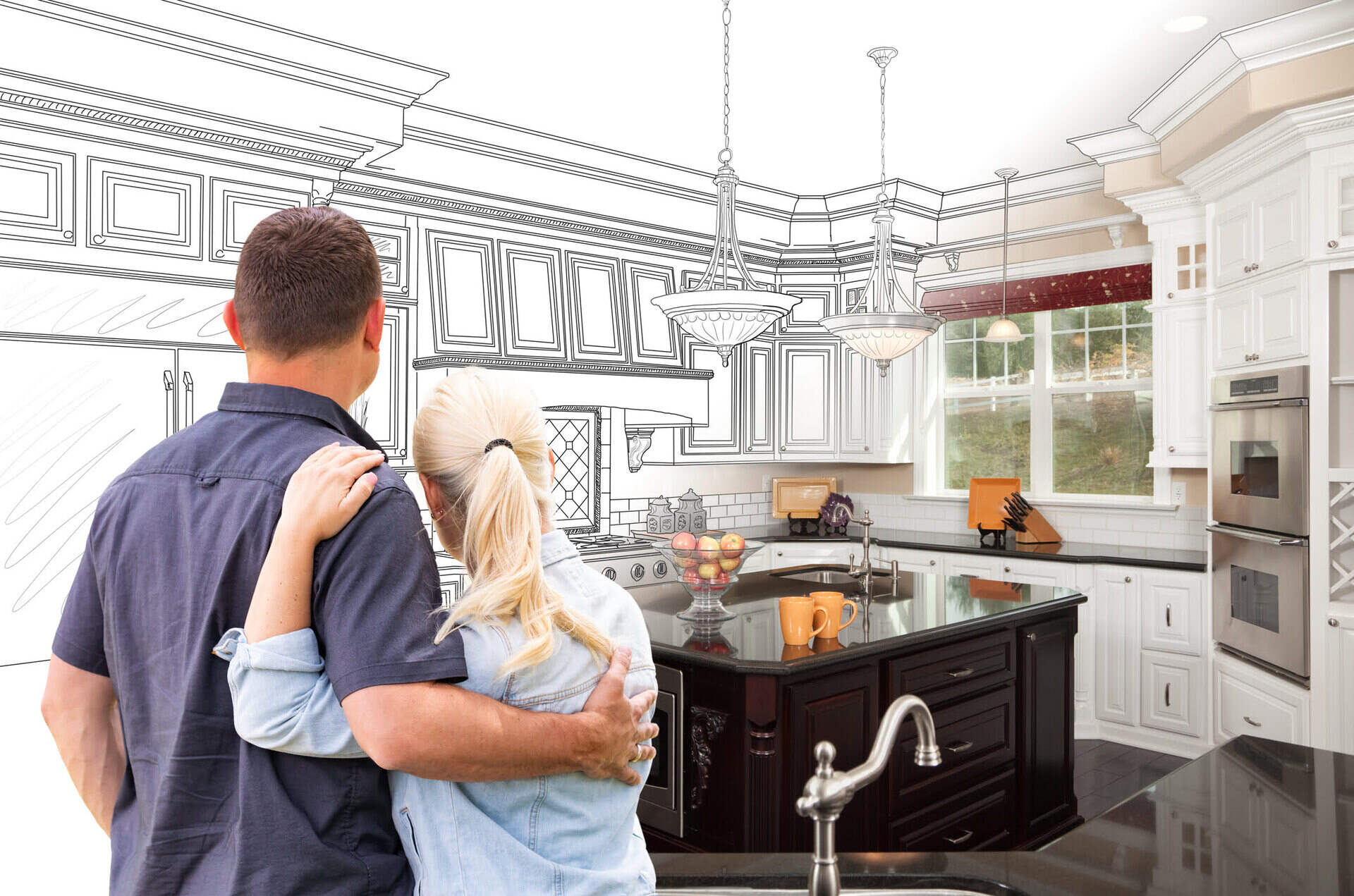

Home Improvement
How To Save Money On A Kitchen Renovation
Modified: February 24, 2024
Learn cost-saving tips and tricks for your home improvement project. Save money on your kitchen renovation with our expert advice.
(Many of the links in this article redirect to a specific reviewed product. Your purchase of these products through affiliate links helps to generate commission for Storables.com, at no extra cost. Learn more)
Introduction
Welcome to our comprehensive guide on how to save money on a kitchen renovation. The kitchen is often considered the heart of the home, but renovating it can come with a hefty price tag. However, with proper planning and smart decision-making, you can achieve the kitchen of your dreams without breaking the bank.
In this article, we will take you through a step-by-step process to help you assess your kitchen renovation needs, set a budget, and prioritize your goals. We will also provide tips and tricks on choosing cost-effective materials and finishes, comparing contractor quotes, and even tackling some of the renovation tasks yourself to save money.
Renovating your kitchen not only improves its functionality and aesthetic appeal but also increases the value of your home. By making informed decisions and following our expert advice, you can navigate the world of kitchen renovations and achieve your desired results while staying within your budget.
So, let’s dive in and discover how you can save money on your kitchen renovation without compromising on quality or style.
Key Takeaways:
- Renovate smart: Assess needs, set budget, prioritize goals, and compare quotes. Choose cost-effective materials, consider DIY, and maximize storage to achieve a beautiful kitchen within budget.
- Finance wisely: Explore savings, loans, and government programs. Balance cost and quality, and plan carefully to achieve a successful kitchen renovation without financial strain.
Read more: How To Save Money On Home Renovation
Assessing your kitchen renovation needs
Before diving into a kitchen renovation project, it’s essential to assess your needs and goals. Take a close look at your current kitchen and identify the areas that require improvement. Is it outdated? Do you need more storage space? Are the appliances in good working condition?
Consider your lifestyle and how you use your kitchen. If you love entertaining, you may want to create an open-concept layout for easier interaction with guests. If you’re an avid cook, you might prioritize high-quality appliances and ample countertop space.
Make a list of the changes you want to make in your kitchen. This might include replacing old appliances, updating cabinets and countertops, improving lighting, or redesigning the layout. Prioritize these changes based on their importance and impact on your daily life.
Take measurements of your kitchen to get a clear idea of the available space. This will help you determine the size and scale of the renovations you can undertake. Keep in mind that major structural changes, such as removing walls or relocating plumbing and electrical connections, can significantly increase the cost of your project.
Additionally, consider the style and design elements you desire. Look for inspiration in magazines, online galleries, and even in showrooms. Create a mood board or Pinterest board to collect images and ideas that resonate with your vision for the kitchen.
By thoroughly assessing your kitchen renovation needs, you can develop a clear plan of action and avoid any costly surprises along the way. This will also help you communicate your requirements effectively with contractors and suppliers, ensuring that your project stays on track and within budget.
Setting a budget for your kitchen renovation
Setting a budget is a crucial step in any home renovation project, including your kitchen. It ensures that you have a realistic understanding of how much you can spend and helps you prioritize your expenses. Here are some tips to help you set a budget for your kitchen renovation:
1. Research: Start by researching the average cost of a kitchen renovation. Look at online resources, consult with professionals, and even ask friends or neighbors who have recently renovated their kitchens. This will give you a general idea of the expenses involved.
2. Itemize expenses: Make a detailed list of all the components of your kitchen renovation. This includes cabinets, countertops, appliances, flooring, lighting, plumbing, and labor costs. Break down each item into specific categories so you can allocate funds accordingly.
3. Determine your financing options: Consider how you will fund your kitchen renovation. Can you pay for it with your savings, or will you need to take out a loan? If you decide to finance the project, research different loan options to find the one that best suits your needs and offers favorable terms and interest rates.
4. Set a contingency fund: It’s advisable to have a contingency fund of at least 10-20% of your total budget. This will account for any unforeseen expenses or changes that may arise during the renovation process.
5. Prioritize your expenses: Identify the areas of your kitchen renovation where you’re willing to splurge and where you can cut costs. For example, you may want to invest in high-quality appliances but opt for more budget-friendly countertops.
6. Get multiple quotes: Reach out to different contractors and suppliers to get multiple quotes for your project. This will allow you to compare prices and negotiate better deals. Remember to consider the reputation and experience of the professionals you’re hiring, as quality workmanship is crucial for a successful kitchen renovation.
7. Don’t forget the small details: In addition to the major expenses, remember to allocate funds for smaller details such as hardware, paint, and accessories. These can add up quickly, so it’s important to factor them into your budget.
By carefully setting a budget for your kitchen renovation, you can effectively manage your expenses and ensure that your project stays financially feasible. It also helps you make informed decisions throughout the renovation process and achieve the kitchen of your dreams without overspending.
Prioritizing your kitchen renovation goals
When planning a kitchen renovation, it’s important to prioritize your goals and determine what aspects of the project are most important to you. This will help you allocate your budget and resources effectively. Here are some factors to consider when prioritizing your kitchen renovation goals:
1. Functionality: Think about how you use your kitchen on a daily basis. Is there enough counter space for meal preparation? Do you need more storage for your pots, pans, and small appliances? Consider the layout and flow of your kitchen and identify any areas that need improvement to enhance functionality. Prioritize changes that will make your kitchen more efficient and user-friendly.
2. Aesthetics: The visual appeal of your kitchen is important for creating a space that you enjoy spending time in. Consider the style and design elements that you prefer, such as modern, farmhouse, or traditional. Choose a color scheme, materials, and finishes that reflect your personal taste and complement the overall design of your home. Prioritize changes that will give your kitchen the aesthetic transformation you desire.
3. Energy efficiency: With the increasing focus on sustainability and reducing energy consumption, consider incorporating energy-efficient appliances and lighting fixtures into your kitchen renovation plans. Upgrading to energy-efficient appliances and installing LED lighting can not only help you save on your utility bills but also positively impact the environment. Prioritize these changes to create an eco-friendly kitchen.
4. Safety and durability: Kitchen renovations provide an opportunity to address any safety concerns or outdated features in your existing kitchen. Evaluate the condition of your electrical and plumbing systems and prioritize any necessary updates to ensure the safety of your home. Additionally, prioritize durable materials and finishes that can withstand the wear and tear of daily kitchen use, ensuring the longevity of your renovation.
5. Budget: Consider your budget constraints and prioritize your goals accordingly. Determine which aspects of the renovation are non-negotiable for you and allocate the majority of your budget towards those areas. Be prepared to make compromises on less essential elements if necessary.
By prioritizing your kitchen renovation goals, you can focus your resources on the most important aspects of the project. This will help you achieve your desired results while staying within budget and ensuring that your renovated kitchen meets your functional, aesthetic, and environmental needs.
Choosing cost-effective materials and finishes
When renovating your kitchen on a budget, choosing the right materials and finishes can make a significant difference in cost without compromising on quality. Here are some tips for selecting cost-effective options:
1. Countertops: Instead of expensive materials like marble or granite, consider cost-effective alternatives like laminate, quartz, or butcher block. These materials offer durability and a wide range of finishes to suit your style and budget.
2. Flooring: Opt for cost-effective flooring options such as vinyl, laminate, or ceramic tiles. These materials are durable, easy to clean, and come in a variety of styles and designs. Consider alternatives to hardwood flooring, which can be more expensive.
3. Cabinets: If your existing cabinets are in good condition, consider giving them a facelift rather than replacing them completely. Repainting or refinishing cabinets can transform their look at a fraction of the cost. Additionally, consider more affordable materials for new cabinets, such as plywood or medium-density fiberboard (MDF), instead of solid wood.
4. Backsplash: Explore cost-effective backsplash options such as subway tiles, peel-and-stick vinyl tiles, or even painted backsplashes. These alternatives provide a stylish look without breaking the bank.
5. Appliances: Look for sales, discounts, or clearance deals when purchasing appliances for your kitchen renovation. Consider purchasing slightly blemished or refurbished appliances, as they often come with significant savings. Additionally, consider energy-efficient appliances, as they can save you money on utility bills in the long run.
6. Lighting fixtures: Rather than splurging on high-end lighting fixtures, consider budget-friendly options that still provide adequate lighting and enhance the ambiance of your kitchen. Look for sales or shop at discount home improvement stores for affordable lighting options.
7. Hardware and fixtures: Upgrading your cabinet hardware, faucets, and other fixtures can give your kitchen a fresh new look. Look for cost-effective options that complement the overall design of your kitchen without breaking your budget.
8. Paint: Painting your kitchen walls and cabinets can instantly transform the space at a minimal cost. Choose neutral colors that are versatile and timeless, allowing you to easily change the look of your kitchen in the future by simply repainting the walls.
Remember, cost-effective does not mean compromising on quality. With careful research and consideration, you can find affordable materials and finishes that offer both durability and aesthetic appeal. By making strategic choices, you can create a beautiful kitchen without stretching your budget.
Comparing quotes from contractors
When planning a kitchen renovation, it’s essential to obtain quotes from different contractors to ensure you get the best value for your money. Comparing these quotes allows you to assess the estimated costs, timelines, and scope of work provided by each contractor. Here are some important factors to consider when comparing quotes:
1. Detailed breakdown of costs: Carefully review each contractor’s quote to understand how the costs are allocated. Look for transparency in pricing and ensure that all necessary components, such as labor, materials, and permits, are clearly identified. Avoid vague or ambiguous quotes that may lead to unexpected expenses later on.
2. Scope of work: Assess the scope of work outlined in each quote. Make sure it aligns with your renovation goals and covers all the necessary tasks, from demolition to installation. The more detailed the scope of work, the better you can compare quotes and ensure each contractor is providing a comprehensive service.
3. Experience and reputation: Consider the experience and reputation of each contractor. Look for reviews, testimonials, or references from previous clients to assess their track record and the quality of their work. Contractors with a solid reputation and positive customer feedback are more likely to deliver satisfactory results.
4. Timeline: Obtain estimated timelines for the completion of the project from each contractor. Consider the duration of the renovation and how it aligns with your schedule and expectations. Be cautious of quotes that promise an unrealistically short timeline, as it may indicate a lack of attention to detail or rush in completing the project.
5. Insurance and certifications: Ensure that each contractor has proper insurance coverage and certifications. This protects you from any liability in case of accidents or damages during the renovation process. Contractors who are licensed and insured indicate a higher level of professionalism and commitment to their work.
6. Communication and rapport: Pay attention to your interactions with each contractor during the quotation process. Assess their responsiveness, willingness to answer questions, and overall communication style. A contractor who communicates effectively and establishes a good rapport with you is more likely to provide a positive experience throughout the renovation process.
7. Cost versus quality: Consider the balance between cost and quality when comparing quotes. While it may be tempting to opt for the lowest-priced quote, it’s important to ensure that the contractor can deliver the desired level of quality and craftsmanship. Choose a contractor who offers a fair price while maintaining a high standard of work.
By thoroughly comparing quotes from different contractors, you can make an informed decision based on factors such as cost, scope of work, experience, and reputation. This ensures that you choose a contractor who aligns with your budget, timeline, and renovation goals, resulting in a successful and satisfying kitchen renovation.
DIY vs. hiring professionals for your kitchen renovation
When it comes to a kitchen renovation, one important decision to make is whether to tackle the project yourself or hire professionals. Both options have their pros and cons, and it ultimately depends on your skills, experience, and the complexity of the renovation. Here are some factors to consider when weighing DIY versus hiring professionals:
1. Skill level and experience: Assess your own skill level and experience in home improvement projects. If you have previous experience and are confident in your abilities, you may feel comfortable taking on certain tasks yourself. However, if you lack experience or are unsure about specific aspects of the renovation, it may be wise to leave it to the professionals. Keep in mind that certain tasks, such as electrical or plumbing work, require specialized knowledge and should always be handled by licensed professionals.
2. Time and availability: Consider your availability and how much time you can dedicate to the renovation project. DIY projects often take longer because you may need to research, learn new skills, and fit the work into your schedule. On the other hand, hiring professionals allows you to rely on their expertise and complete the project within a specified timeline. If time is a constraint or if you prefer a faster completion, hiring professionals may be the better choice.
3. Cost considerations: DIY projects can be cost-effective as you have more control over the budget. You can choose more affordable materials, save on labor costs, and have the freedom to complete the renovation at your own pace. However, it’s important to realistically assess your capabilities. Mistakes made during a DIY project can lead to additional expenses to rectify errors. Hiring professionals may come with a higher upfront cost, but they bring expertise, efficiency, and the assurance of a job done right the first time.
4. Quality of work: Consider the level of quality you want to achieve with your kitchen renovation. Professionals have the necessary skills, knowledge, and equipment to deliver high-quality workmanship. They have experience in handling various challenges that may arise during the renovation and can provide solutions based on their expertise. If you have specific design requirements or want a polished finish, hiring professionals is likely the best choice.
5. Warranty and insurance: Hiring professionals often comes with the advantage of warranties and insurance coverage. If something goes wrong or if there are any issues with the work completed, professionals can provide recourse and rectify the situation. DIY projects do not come with such guarantees, and any mistakes or damage may require additional expenses to fix.
Ultimately, the decision between DIY and hiring professionals for your kitchen renovation depends on your comfort level, time availability, budget, and desired level of quality. It’s important to be realistic about your skills and limitations and to consider the complexity of the project. Consulting with professionals can help you understand the scope of work involved, provide estimates, and assist in making an informed decision.
Saving money on appliances and fixtures
Appliances and fixtures can be a significant expense in a kitchen renovation, but there are ways to save money without compromising on quality. Here are some tips to help you save money on appliances and fixtures:
1. Research and compare prices: Take the time to research different brands and models of appliances and fixtures. Look for sales, discounts, and special promotions both online and in-store. Compare prices from multiple retailers to ensure you are getting the best deal.
2. Consider energy efficiency: Energy-efficient appliances and fixtures not only save you money on your utility bills but may also qualify you for rebates or tax credits. Look for appliances with the ENERGY STAR® label, which indicates that they meet strict energy efficiency standards.
3. Opt for floor models or last year’s models: Retailers often offer discounts on floor models or last year’s models to make room for new inventory. These appliances and fixtures are typically brand new but may come with a reduced price simply because they are not the latest model.
4. Shop during holiday sales: Take advantage of holiday sales, such as Black Friday or Memorial Day, when retailers offer significant discounts on appliances and fixtures. Plan your renovation timeline to align with these sales to maximize your savings.
5. Consider refurbished or used appliances: Refurbished or used appliances can offer substantial savings compared to brand new ones. When purchasing refurbished appliances, ensure they come with a warranty and have been thoroughly tested to ensure they are in good working condition.
6. Take advantage of package deals: When buying multiple appliances or fixtures from the same retailer, inquire about package deals. Retailers often offer discounts when you purchase a complete set of appliances or fixtures for your kitchen, helping you save money in the long run.
7. Consider alternative brands: Instead of solely focusing on well-known brands, consider exploring lesser-known or generic brands. These brands may offer similar features and quality but come with a lower price tag due to less brand recognition.
8. Look for discontinued models: Appliances and fixtures that are being discontinued or phased out may be available at a discounted price. Check with retailers or manufacturers to see if any discontinued models are on sale.
9. Don’t overlook scratch and dent sales: Retailers often have sales on appliances and fixtures with minor cosmetic flaws. These imperfections are often superficial and do not affect the functionality of the item. Consider purchasing scratch and dent items to save money.
Remember to balance cost savings with quality and durability. While it’s important to save money, investing in reliable appliances and fixtures ensures that they will last longer and require fewer repairs or replacements down the line. By implementing these money-saving tips, you can achieve a functional and stylish kitchen without breaking the bank.
Consider keeping the existing layout of your kitchen to save on plumbing and electrical work. This can significantly reduce the cost of your renovation.
Maximizing storage space without breaking the bank
When renovating your kitchen, creating ample storage space is often a top priority. However, expanding storage can quickly become expensive. Fortunately, there are cost-effective ways to maximize storage space in your kitchen without breaking the bank. Here are some tips to help you achieve this:
1. Optimize cabinet space: Make the most of your existing cabinet space by adding organizers and inserts. Utilize stackable shelves, pull-out drawers, and shelf dividers to increase storage efficiency. These inexpensive solutions can help you maximize every inch of your cabinet space and keep items organized.
2. Install open shelves: Consider removing traditional upper cabinets and replacing them with open shelves. This can create a more spacious and airy feel while providing a practical storage solution. You can display frequently used items or stylish kitchenware while freeing up cabinet space for less attractive or lesser-used items.
3. Utilize vertical space: Don’t overlook the vertical space in your kitchen. Install wall-mounted racks, hooks, or pegboards for hanging pots, pans, and utensils. This not only frees up valuable cabinet space but also adds a visual element to your kitchen decor.
4. Utilize the insides of cabinet doors: The insides of cabinet doors are often overlooked areas that can provide additional storage. Mount small shelves or hooks on the inside of cabinet doors to store spices, cutting boards, or kitchen utensils. This allows for easy access and efficient use of space.
5. Make use of underutilized areas: Look for underutilized areas in your kitchen where you can add storage. This could include installing shelves above windows, utilizing the space between the refrigerator and the wall, or adding a narrow pull-out pantry between appliances or cabinets.
6. Use clear containers and labels: Transferring dry goods, spices, and other pantry items into clear containers not only keeps them fresh and organized but also allows you to stack them efficiently. Additionally, labeling containers and shelves helps you quickly locate items, ultimately saving time and frustration.
7. Invest in multi-purpose furniture: Consider incorporating multi-purpose furniture into your kitchen design. For example, a kitchen island with built-in storage or a dining table with drawers can provide extra storage while serving functional purposes.
8. Declutter and prioritize: Before embarking on a renovation, declutter your kitchen and prioritize what you actually need and use. Getting rid of unnecessary items helps create space and ensures that your new storage solutions are optimized for items you truly need and value.
Remember, maximizing storage space doesn’t always mean adding more cabinets or expensive storage solutions. By utilizing these cost-effective strategies, you can optimize your kitchen’s storage potential without straining your budget. Think creatively, utilize every inch of available space, and focus on organizing your items efficiently to create a clutter-free and functional kitchen.
Read more: How To Save Money On Thermostat
Energy-efficient kitchen lighting options
When renovating your kitchen, lighting plays a crucial role in creating a functional and comfortable space. Opting for energy-efficient lighting not only helps reduce your energy consumption but also lowers your utility bills. Here are some energy-efficient kitchen lighting options to consider:
1. LED lighting: LED (Light Emitting Diode) lights are highly energy-efficient and have a longer lifespan compared to traditional incandescent or fluorescent bulbs. LED lights use significantly less energy and can save up to 75% in energy costs. They are available in various color temperatures, allowing you to choose warm or cool lighting options to suit your kitchen’s ambiance.
2. Under-cabinet lighting: Installing under-cabinet LED lights not only enhances the aesthetics of your kitchen but also provides task lighting for food preparation and cooking. LED strip lights or puck lights are excellent options for illuminating countertops and eliminating shadows. They are energy-efficient, easy to install, and create a warm and inviting atmosphere in your kitchen.
3. Compact fluorescent lights (CFLs): CFLs are a cost-effective alternative to traditional incandescent bulbs. They use 75% less energy and can last up to 10 times longer. CFLs are available in various sizes, shapes, and color temperatures, providing you with flexibility to choose the right lighting for your kitchen.
4. Natural lighting: Take advantage of natural lighting to illuminate your kitchen during the day. Maximize the amount of natural light by incorporating large windows, skylights, or glass doors. Natural light not only saves energy but also enhances the overall ambiance of your kitchen, making it feel brighter and more spacious.
5. Motion sensor or occupancy lighting: Consider installing motion sensor or occupancy lighting in areas of your kitchen that are less frequently used, such as pantries or utility closets. These lights turn on automatically when someone enters the area and turn off when the space is unoccupied. This ensures that lights are only used when needed, reducing energy wastage.
6. Dimmer switches: Install dimmer switches for your kitchen lighting fixtures. Dimmers allow you to adjust the brightness level according to your needs, providing task lighting for cooking or brighter ambient lighting for entertaining. By dimming the lights, you can conserve energy and extend the lifespan of the bulbs.
7. Smart lighting systems: Consider investing in smart lighting systems that offer energy-saving features. These systems allow you to control the lighting in your kitchen using a smartphone or voice commands. You can schedule lights to turn on or off at specific times, adjust brightness remotely, and even integrate with other smart home devices for enhanced convenience and energy efficiency.
When selecting energy-efficient lighting options, be sure to look for the ENERGY STAR® certification. This label ensures that the lighting products meet rigorous energy efficiency standards set by the Environmental Protection Agency (EPA).
By incorporating these energy-efficient lighting options into your kitchen renovation, you can create a well-lit and eco-friendly space that saves energy and reduces your carbon footprint while providing functionality and style.
Selecting affordable kitchen countertops and backsplashes
When renovating your kitchen, selecting affordable countertops and backsplashes can help you stay within budget without sacrificing style and quality. Here are some tips to consider when choosing cost-effective options:
1. Laminate countertops: Laminate countertops are a popular choice for those seeking affordable options. They come in a wide range of colors, patterns, and textures, mimicking the appearance of natural stone at a fraction of the cost. Laminate countertops are durable, easy to clean, and resistant to stains and scratches, making them a practical and budget-friendly choice.
2. Butcher block countertops: Butcher block countertops provide a warm and rustic look to your kitchen. Made from wood, they are an affordable alternative to expensive stone surfaces. Butcher block countertops are relatively easy to install and can be sanded and refinished to remove scratches or signs of wear over time.
3. Ceramic tile countertops: Ceramic tiles are a cost-effective option for both countertops and backsplashes. They are available in a variety of sizes, colors, and patterns, allowing you to create a custom look for your kitchen. Ceramic tile countertops are durable, heat-resistant, and easy to clean. Additionally, if a tile gets damaged, it can be replaced individually without having to replace the entire countertop.
4. Solid surface countertops: Solid surface countertops offer a budget-friendly option that mimics the appearance of natural stone. Made from a mixture of acrylic and polyester resin, they are available in a variety of colors and styles. Solid surface countertops are non-porous, easy to clean, and resistant to stains and bacteria growth. While they may be slightly more expensive than laminate or ceramic tiles, they can still be a cost-effective choice compared to higher-end materials.
5. Backsplash alternatives: If you’re looking for an affordable backsplash solution, there are several options to consider. Painted or tiled backsplashes are cost-effective and allow for creativity to match your kitchen’s style. Peel-and-stick vinyl tiles or wallpaper can also provide a budget-friendly option that is easy to install and offers a wide range of designs and patterns.
6. Comparison shop: Before making a final decision, compare prices from different suppliers and retailers. Look for sales, discounts, or consider purchasing from a wholesaler to get the best price on countertops and backsplash materials. Be sure to compare not only the cost of the materials but also the installation costs, as this can vary between suppliers.
7. Consider remnant pieces: If you’re flexible with colors and designs, check with countertop suppliers for remnant pieces. Remnants are leftover sections from larger slabs, and they can be significantly discounted. This allows you to get high-quality materials at a fraction of the cost, making it an economical choice.
Remember, affordable doesn’t have to mean sacrificing quality or style. With careful consideration and research, you can select cost-effective countertops and backsplashes that enhance the aesthetic appeal of your kitchen while staying within your budget.
Updating kitchen cabinets on a budget
Updating kitchen cabinets can give your kitchen a fresh new look, but it doesn’t have to break the bank. Here are some cost-effective ways to update your kitchen cabinets on a budget:
1. Repaint or refinish: One of the most budget-friendly options is to repaint or refinish your existing cabinets. A fresh coat of paint can instantly transform the look of your kitchen. Choose a color that complements your kitchen’s style and creates the desired ambiance. Alternatively, consider refinishing the cabinets by sanding them down and applying a new stain or varnish to refresh their appearance.
2. Replace cabinet hardware: Swapping out your cabinet hardware can make a big impact on the overall look of your cabinets. Choose modern or decorative knobs, handles, or pulls that match your kitchen’s style. This simple update can give your cabinets a more updated and personalized look without the need for a full replacement.
3. Add crown molding or trim: Crown molding or trim can instantly upgrade the look and elegance of your cabinets. Installing crown molding along the top of your cabinets or adding decorative trim to the cabinet doors can give them a more refined and high-end appearance. This option is relatively inexpensive, but it can make a significant difference in the overall aesthetic of your kitchen.
4. Install glass inserts: If you have solid cabinet doors, consider installing glass inserts to add visual interest and create an open and spacious feel. You can choose from clear glass, frosted glass, or decorative glass options. This update can give your kitchen cabinets a modern and stylish look without the need for complete replacement.
5. Remove cabinet doors: An increasingly popular trend is to remove cabinet doors entirely to create open shelving. This not only gives your kitchen a more contemporary and airy feel but also allows you to display your favorite dishes or decorative pieces. It’s a cost-effective way to update your cabinets while making the space feel more open and inviting.
6. Install peel-and-stick contact paper: For a quick and affordable update, consider using peel-and-stick contact paper to give your cabinets a new look. Contact paper is available in various colors, patterns, and textures, allowing you to create a unique and personalized design. It’s easy to apply and remove, making it a great temporary or budget-friendly solution.
7. Consider open shelving: If you’re looking for a dramatic change, consider removing upper cabinet doors altogether and replacing them with open shelving. This can create a more modern and spacious feel in your kitchen. Be sure to keep the shelves organized and tidy to maintain an aesthetic appeal.
When updating kitchen cabinets on a budget, it’s essential to prioritize the changes that will make the most significant impact. By focusing on cosmetic updates, such as repainting, changing hardware, or adding molding, you can achieve a fresh and updated look without the need for a complete cabinet replacement. Remember to research and plan your updates carefully, ensuring that they align with your budget and overall vision for your kitchen.
Tips for reducing labor costs during your kitchen renovation
Managing labor costs is essential for staying within budget during a kitchen renovation. Here are some tips to help you reduce labor costs while still achieving a successful and high-quality renovation:
1. Plan your renovation carefully: Create a detailed plan and timeline for your kitchen renovation to ensure that the work is carried out efficiently. This minimizes delays and prevents unnecessary labor costs from extended project timelines. Clear communication with your contractors regarding your expectations and project scope is vital to avoid any misunderstandings or surprises.
2. Do your own demolition: Demolition work, such as removing old cabinets, appliances, or flooring, can be done as a DIY project. By doing the demolition yourself, you can save on labor costs. However, be sure to consult with professionals beforehand to understand any potential risks or safety considerations.
3. Hire licensed and reputable professionals: While it may seem counterintuitive, hiring licensed and reputable professionals can actually save you money in the long run. Experienced professionals can complete the work efficiently and to a high standard, reducing the likelihood of mistakes or costly rework. Research and choose contractors with a solid track record, positive reviews, and clear pricing structures.
4. Seek multiple quotes: Obtain quotes from several contractors and compare them to ensure you are getting a fair price. However, don’t solely focus on finding the cheapest option. Consider the overall value for money, taking into account the contractor’s expertise, reputation, and the quality of their work. It’s essential to strike a balance between cost and quality to ensure a successful renovation.
5. Be flexible with your renovation schedule: Contractors often have busy periods and slower times throughout the year. Consider scheduling your renovation during the contractor’s off-peak season when they may offer discounted rates to secure work. Being flexible with your renovation schedule can help you negotiate better pricing with contractors.
6. DIY where possible: Consider taking on smaller tasks as DIY projects to save on labor costs. For example, you may choose to install the backsplash, paint the walls, or assemble and install pre-made cabinets yourself. However, be honest with your abilities and only take on tasks that you are confident you can handle properly.
7. Opt for pre-made or flat-pack cabinets: Custom or built-in cabinets can be expensive due to the labor and materials required for their construction. Consider using pre-made or flat-pack cabinets, which are less expensive and quicker to install. While they may not offer the same level of customization, they can still provide a cost-effective and functional solution.
8. Minimize structural changes: Structural changes, such as moving plumbing or electrical connections, can significantly increase labor costs. Try to work with the existing layout of your kitchen as much as possible to avoid the need for extensive structural modifications. This helps reduce labor costs and keeps your project on track.
Remember, while reducing labor costs is important, the quality of work should not be compromised. It’s essential to find a balance between cost savings and achieving a successful renovation. By planning carefully, seeking multiple quotes, and making smart choices, you can successfully reduce labor costs without compromising on the final outcome of your kitchen renovation.
Read more: How To Save Money On A Renovation
Financing options for your kitchen renovation
Embarking on a kitchen renovation project often requires careful financial planning. If you don’t have the funds readily available, there are several financing options to consider. Here are some common ways to finance your kitchen renovation:
1. Savings: Paying for your kitchen renovation with cash from your savings is the most straightforward option. If you have enough funds set aside, using your savings eliminates the need for interest or additional debt. However, be mindful of depleting your emergency fund and leaving yourself financially vulnerable.
2. Personal loan: Taking out a personal loan can provide a lump sum of money that can be used to finance your renovation. Personal loans typically have fixed interest rates and flexible repayment terms. Shop around for the best loan terms and compare interest rates from different lenders to secure the most favorable terms that suit your financial situation.
3. Home equity loan: If you have built up equity in your home, you may consider applying for a home equity loan. This type of loan uses your home as collateral and allows you to borrow a percentage of your home’s value. Home equity loans often have lower interest rates than personal loans, making them an attractive financing option. However, be aware that defaulting on the loan could result in the loss of your home.
4. Home equity line of credit (HELOC): Similar to a home equity loan, a HELOC allows you to borrow against the equity in your home. However, a HELOC provides a revolving line of credit that you can draw from as needed. Interest is only charged on the amount borrowed, and repayment terms can be more flexible. Like a home equity loan, defaulting on a HELOC could result in the loss of your home.
5. Credit cards: If your renovation costs are relatively low, using credit cards can be a convenient option. However, be cautious of high interest rates associated with credit cards. It’s advisable to use credit cards with low or zero introductory interest rates and ensure that you have a repayment plan in place to avoid accumulating debt.
6. Contractor financing: Some contractors offer financing options for their services. This can be a convenient option as the contractor handles the financing process. Be sure to carefully review the terms and interest rates before opting for this financing option, as it may not always be the most favorable.
7. Government or non-profit programs: In certain cases, there may be government or non-profit programs available that provide financial assistance for home renovations. These programs may offer grants, loans, or subsidies to eligible homeowners. Research and inquire about such programs in your local area to see if any are applicable to your kitchen renovation project.
8. Combination of financing options: Depending on the scale and cost of your kitchen renovation, you may choose to combine different financing options. For example, you could use a personal loan to cover a portion of the costs while paying for the remainder with your savings. Assess the interest rates, terms, and repayment plans of each option to determine the most effective combination for your situation.
Before committing to any financing option, carefully assess your budget, creditworthiness, and ability to repay the debt. Consider consulting with a financial advisor to evaluate the best financing option for your specific needs. With proper planning and consideration, you can find the right financing solution to make your kitchen renovation a reality.
Conclusion
Renovating your kitchen doesn’t have to be a daunting and expensive endeavor. By following the tips and strategies outlined in this guide, you can save money while still achieving a beautiful and functional kitchen that meets your needs and style. Assess your kitchen renovation needs, set a realistic budget, and prioritize your goals to ensure you stay on track throughout the process.
Consider cost-effective materials and finishes when selecting countertops, backsplashes, and fixtures. Compare quotes from different contractors, seeking both affordability and quality. Determine whether you should take on certain tasks as DIY projects or hire professionals for the job. Look for savings on appliances and utilize energy-efficient lighting options to reduce long-term expenses.
Maximize storage space without overspending by utilizing organization techniques and making the most of underutilized areas. Update your kitchen cabinets with affordable alternatives such as repainting, hardware replacements, or adding trim. Use these cost-effective strategies to breathe new life into your kitchen without extensive labor costs.
When financing your kitchen renovation, explore various options such as personal loans, home equity loans or lines of credit, or even contractor financing. Assess the pros and cons of each option and choose the one that best fits your financial situation and goals.
In conclusion, with careful planning, creative thinking, and smart decision-making, you can achieve a remarkable kitchen renovation while keeping your budget intact. Remember to prioritize your needs, research your options, and strike a balance between cost savings and quality. Whether you’re updating appliances, installing new flooring, or revamping your cabinets, these strategies will help you create a beautiful and functional kitchen without breaking the bank.
Frequently Asked Questions about How To Save Money On A Kitchen Renovation
Was this page helpful?
At Storables.com, we guarantee accurate and reliable information. Our content, validated by Expert Board Contributors, is crafted following stringent Editorial Policies. We're committed to providing you with well-researched, expert-backed insights for all your informational needs.


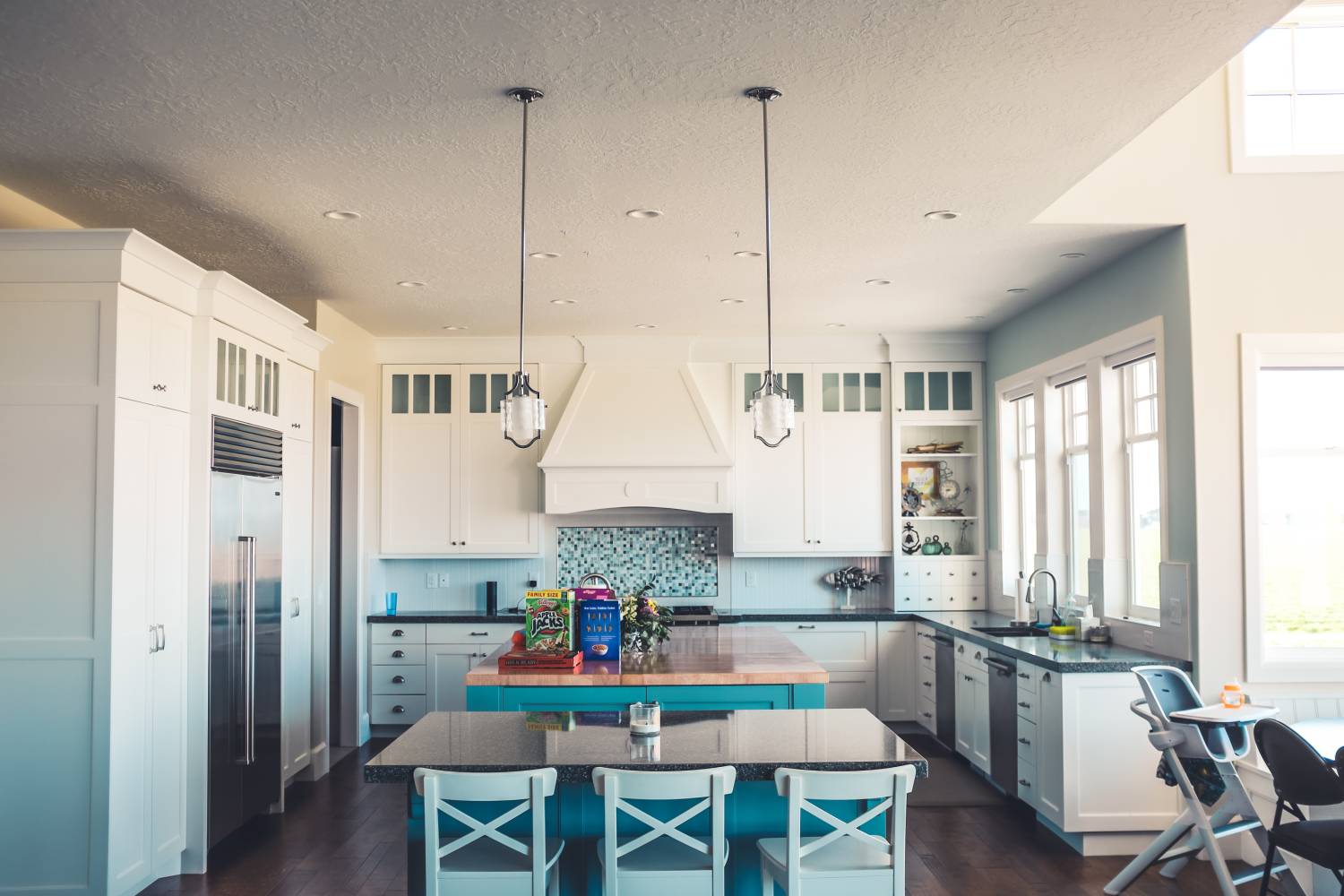
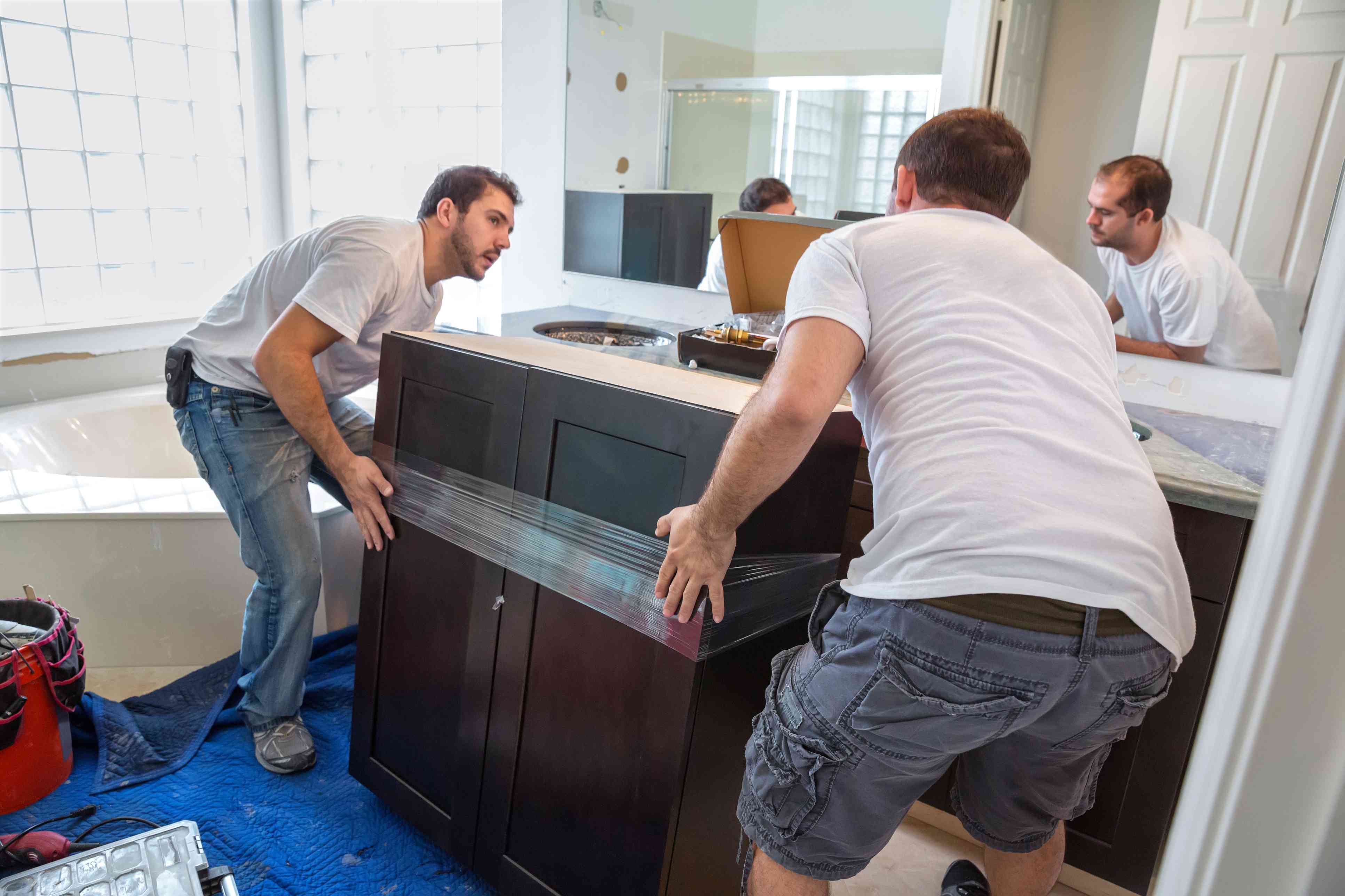
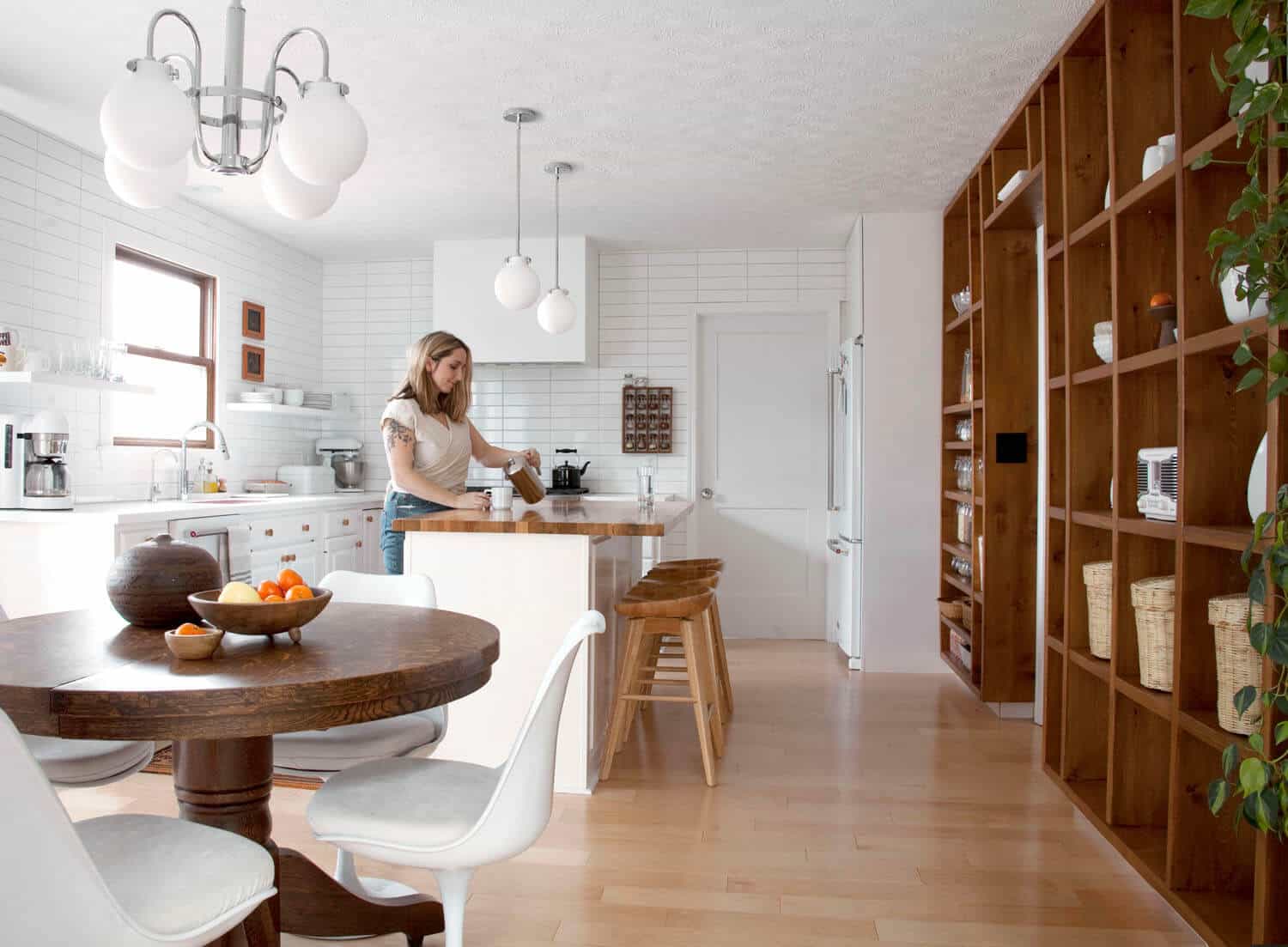



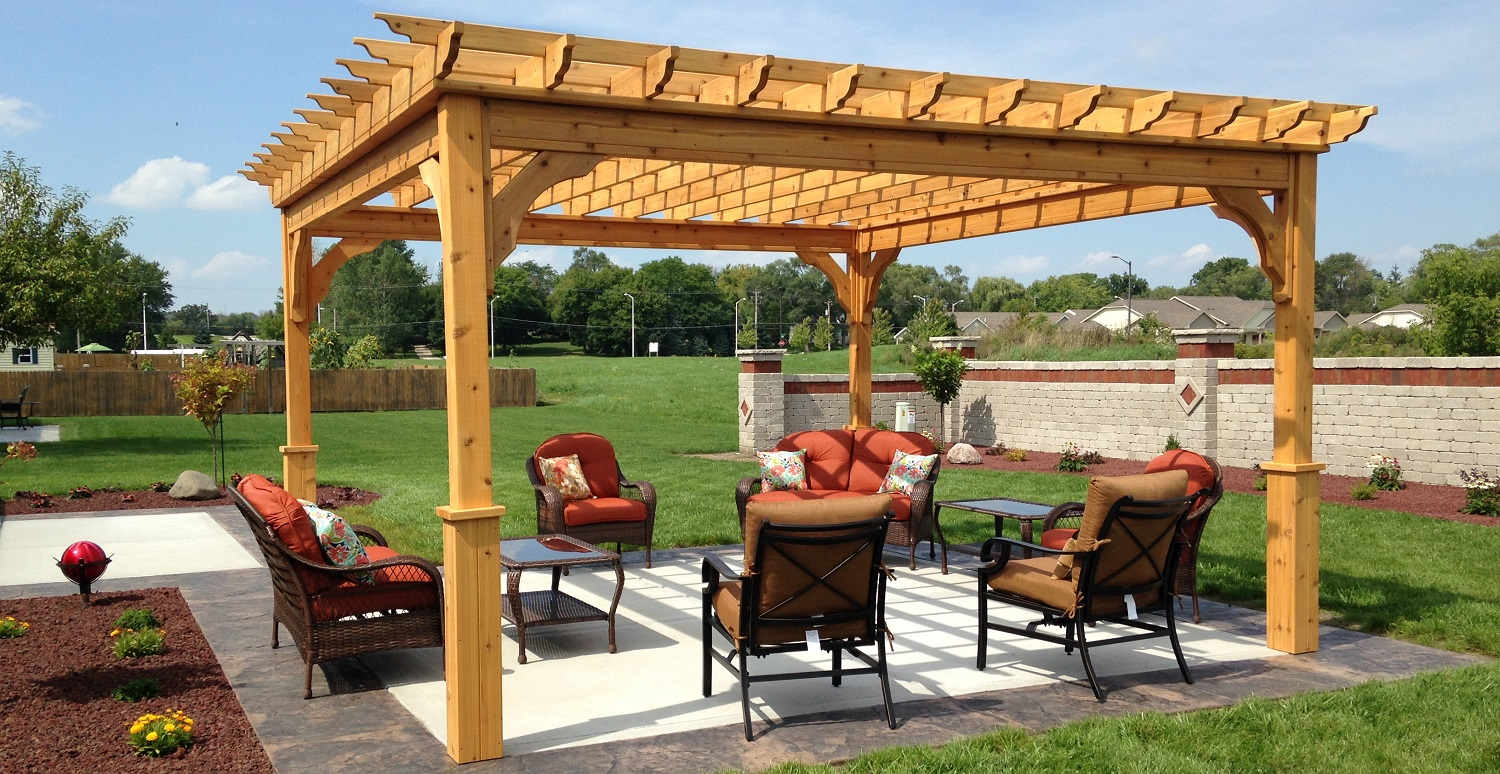


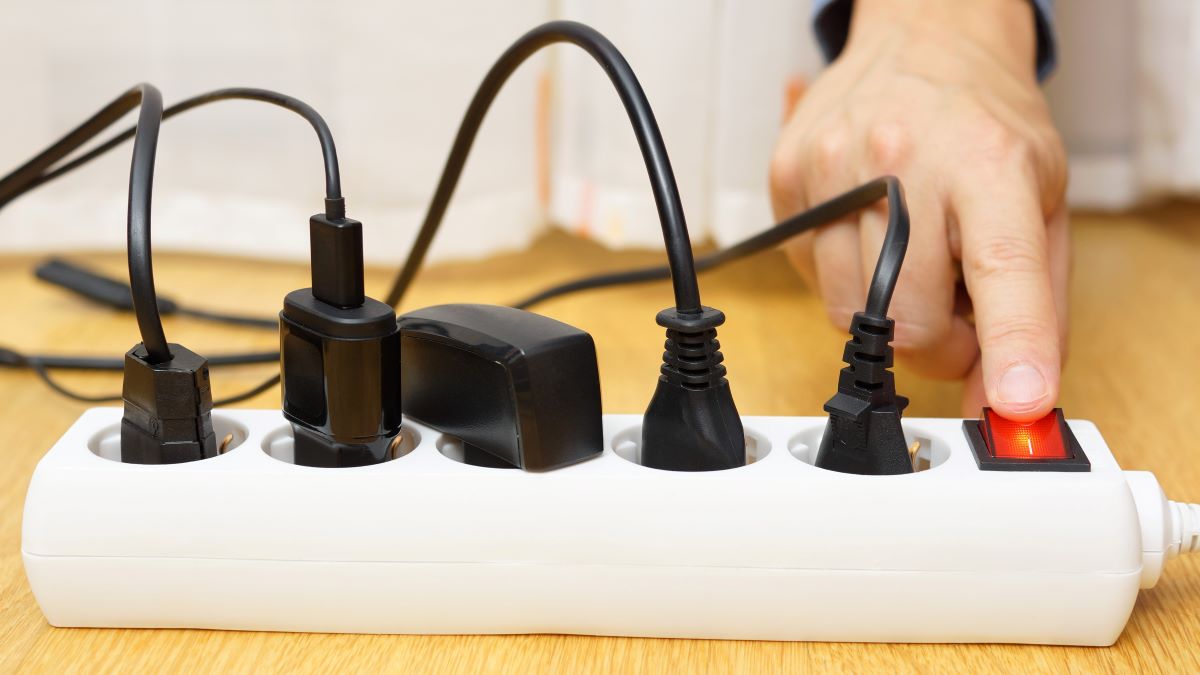

0 thoughts on “How To Save Money On A Kitchen Renovation”